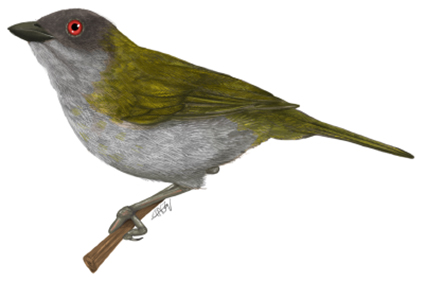A taxonomic assessment of Chlorospingus flavopectus phaeocephalus and Chlorospingus semifuscus (Passeriformes: Passerellidae), including the description of a new subspecies
MANUEL SÁNCHEZ-NIVICELA+ JORGE ENRIQUE AVENDAÑO+ JUAN C. SÁNCHEZ-NIVICELA+ ANA TORRES+ JÉRÔME FUCHS+ BENTLEY BIRD+ ELISA BONACCORSO+
Abstract
Chlorospingus flavopectus, a widely distributed member of the New World sparrows and finches (Passerellidae), is among the most variable and complex Neotropical bird species. With up to 28 subspecies that inhabit montane forest from Mexico south to Argentina, it presents a recurring leapfrog pattern, with many genetically differentiated lineages, but even more morphologically distinguishable taxa. C
hlorospingus flavopectus phaeocephalus is distributed along the eastern Andean slope (from southern Colombia to northern Peru) and in localized patches along the central and southwestern slopes of the Ecuadorian Andes, in the forest remnants of Chimborazo, El Oro, and adjacent Loja provinces. This allopatric distribution was based on plumage similarities, but no genetic or vocal analysis has tested if these populations share a common ancestry. Here, we compared data for populations of
C. f. phaeocephalus,
C. semifuscus semifuscus from northwest Ecuador, and
C. s. livingstoni from west Colombia, and analyzed them in the context of other
Chlorospingus. Our phylogenetic analyses revealed that the putative west Ecuadorian populations of
C. f. phaeocephalus are nested within
C. semifuscus. They also present diagnostic characters when compared to other populations of
C. semifuscus and
C. f. phaeocephalus. Based on these results, we recognize the population from El Oro and adjacent Loja Provinces as a new subspecies of
C. semifuscus, and the population from Chimborazo Province as a morphological variation of
C. s. semifuscus.







